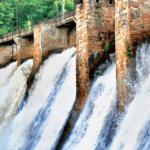When considering Nepal’s traditional soft power, the nation has long been associated with its iconic landmarks like Mt. Everest, the Birthplace of Buddha, and the legendary Gurkha warriors. However, a new image and soft power of Nepal is emerging through the realm of sports, we will look into the rise of Nepal in cricket and the prominence of adventure sports for this article. Globally, sports are acknowledged to have this unique ability to transcend borders and unite people. It is a powerful tool for building a country’s and its people’s image, fostering international goodwill, and promoting cultural exchange from sports diplomacy. China-America had used Ping-Pong diplomacy to improve its bilateral relationship during the 1970s. Countries such as Brazil, Japan, and South Korea have hosted sports events like the Fifa World Cup and the Olympics to boost their global image and economic growth. Qatar hosted the Fifa World Cup 2022 to diversify its economy.
Similarly, the Sports League such as the IPL(Indian Premier League) of India, the NBA (National Basketball Association) of the United States, the Premier League of the United Kingdom, La Liga of Spain, etc. contribute significantly to building the soft power of those nations, economy, etc. Even a small city in northeastern Pakistan, Sialkot, produces around 70% of global football contributing to the country’s sports economy. Thus, sports significantly affect a country’s image and economy. It is time for Nepal to prioritize sports and contribute to Nepal’s soft power and potential for developing its sports economy.
The Rise of Nepali Cricket
Nepali cricket is rapidly gaining global recognition for its fearless gameplay and outstanding sportsmanship. The immense support and love from fans have been pivotal, with Nepal even bagging the ICC Digital Fan Engagement of the Year award in 2023. Nowadays, when we travel abroad, Nepal’s cricket match performance against India and Pakistan in the Asia Cup has become a conversation starter. The national men’s cricket team is set to participate in the T20 World Cup for the second time in the United States from June 1-29, 2024, which offers a significant opportunity to showcase Nepal on the global stage. Similarly, domestic cricket leagues such as Everest Premier League, and Nepal T20 League have gained popularity among international and domestic circuits.
This popularity in the game will help Nepal to benefit its tourism sector and foster cultural exchange as many cricketing teams and test-playing nations will visit Nepal to play the game. These players and their support staff, the audience or fans who follow Nepal cricket, and possibly traveling cricket fans of countries such as India, England, Australia, etc. It can be a platform to promote our tourism through cricket match coverage. Further, Nepal can also leverage its strategic location in South Asia to host high-profile matches, due to the popularity of the sports in the region by building world-class cricket infrastructure. Thus, generating employment and revenue and serving as a diplomatic tool for regional peace and stability.
The prominence of Adventure Sports
Nepal is famed for its adventure sports, particularly mountaineering. This sector has seen a revival after the COVID-19 pandemic, with the success of the 14 Peaks: Nothing Is Impossible documentary in 2021 further increasing the popularity of mountaineering. It has eight of the world’s ten highest peaks above 8000 meters, and more than 300 peaks open for climbing and trekking. The Everest, Annapurna, and Langtang regions are famous for trekking and climbing and draw adventurers from around the globe, generating government revenue and lucrative job opportunities. Beyond mountaineering, Nepal’s diverse topography also offers an unparalleled playfield for adventure enthusiasts, such as white-water rafting, kayaking, mountain biking, paragliding, zip-lining, bungee jumping, and canyoning.
As per the Adventure Tourism Development Index (ATDI) Report 2020, Nepal stands at a crossroads, where Nepal ranks 67th and has an ATDI score of 212 among developing countries, standing second to Bhutan and ahead of Maldives, India, Sri Lanka, and Pakistan in South Asia. Nepal has scored well for adventure activity resources, readiness factor, sustainable development, culture, and image. It needs further strategic investments in upgrading current infrastructure, implementing responsible tourism policies, supporting adventure sports entrepreneurs, and marketing campaigns to attract adventurers globally. We can leverage our natural landscape, and growing global interest in adventure sports and brand our destinations accordingly. Nepal also has immense potential to organize and host international adventure sports events. Some of the international adventure events already hosted are the Everest Marathon, the Paragliding World Cup, the Yak Attack Mountain Bike Race, the Himal Race, etc.
Moving forward: The 3 ‘S’ Strategy
Nepal also has potential in various other sports, such as football, table tennis, badminton, volleyball, ultra-trail running, martial arts, etc. To have a robust soft power the need to build an ecosystem to develop our sports sector and athletes by prioritizing and strategically allocating resources. We need to focus on three key areas: Skill development, Support & Sustainability.
Skill development requires investment in proper training facilities, talent recognition, and development programs at all levels. Equip sports academies with advanced technology, training equipment, and quality coaching. To focus on physical and mental conditioning to build athlete’s physical fitness, stamina, strength, and mental health. A well-rounded conditioning program can focus on a hybrid training regime for athletes with SMART goals (Specific, Measurable, Achievable, Relevant, and Time-bound). Further, to implement strategic planning with qualified coaches and sports management professionals to ensure that athletes are equipped with the latest game plans and strategies.
Support needs to be given to sports players as representatives and source of pride for the country. It is necessary to implement proper policies, allocate sufficient budgets, and secure sponsorships to support them. The national sports budget needs to be increased. The FY 2023/2024 budget allocated a meager NPR 2.09 billion out of NPR 1.75 trillion, with the trend of budget allocated for the last seven years, the investment in sports is decreasing. We further need to enhance fan engagement through well-packaged sports events, fostering a sports culture that takes ownership and pride in its players and teams. Argentina has leveraged its strong football culture to build robust sports economies. Similarly, the football legacy in Kolkata demonstrates how historical and cultural ties to sports can foster deep-rooted community support.
Sustainability is another key issue to be addressed to unlock the potential of sports in Nepal. Improve sports current infrastructure as news of Dasharath stadium being unfit to hold international matches doesn’t give a positive message. Invest in modern stadiums, training centers, and sports academies. Further, to organize regular competitions, both at the international and domestic level to give athletes opportunities to showcase their skills and gain exposure. Embrace sustainable practices in sports by adopting environmentally friendly methods, ensuring financial stability, and promoting inclusivity in sports programs.
Thus, Nepal stands at a pivotal juncture where the sports economy could significantly contribute to redefining its soft power on the global stage and economic development. By leveraging the growing popularity of cricket, the rising prominence of adventure sports, investing strategically in sports infrastructure, and building a sustainable sports ecosystem, Nepal can transform its sports economy into a robust pillar of its soft power and benefit from the democratic dividend. It is time for Nepal to unleash the full potential of the sports economy and leverage its new evolving global identity.
Adhish Kumar Gorkhali is a management graduate with specialization in Project Management and minor in Finance. Currently working as a Beed at Beed Management. He has worked in various Nepal and Eritrea based projects. He is passionate about projects, which can create a virtuous cycle in the economy and community. He believes in teamwork, synergy and transformation. He is a polyglot and regards himself as a learner. He likes cycling, traveling, origami and learning about different cultures.





